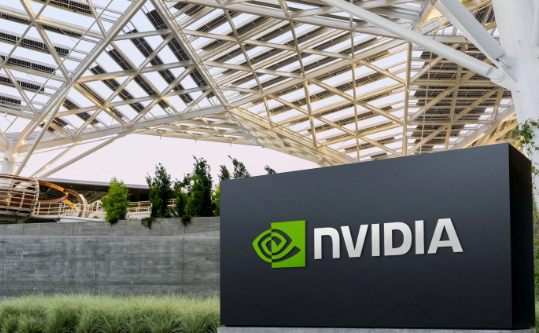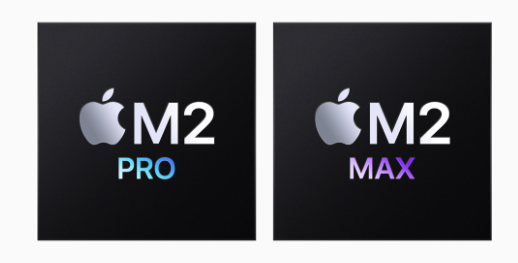十月 25, 2023
861
According to reliable sources, NVIDIA has been exposed as adopting Arm's technology to design central processing units (CPUs) capable of running the Microsoft Windows operating system. At the same time, it is disclosed by insiders that AMD is also planning to develop PC processors based on Arm technology, and both companies are expected to launch their processors by 2025.
For many years, the x86 instruction set architecture has dominated the PC processor market, with Intel holding the majority of the market share, followed by AMD. In recent years, the PC processor market has seen new challengers in the form of the Arm instruction set architecture, with market share rapidly increasing. Early players in this field were primarily Apple, with Qualcomm also entering early. Now, this sector is welcoming NVIDIA and AMD.

It's not hard to imagine that with companies like Qualcomm, NVIDIA, and AMD entering the market with Arm architecture processors, the landscape of the PC processor market will undergo significant changes. Intel, which has long held a dominant position in the PC processor market, will face intense competition.
In 2006, Apple collaborated with Intel to develop Mac processors, but their partnership was not smooth. As a result, Apple began designing its chips for its Mac product line, using the Arm instruction set architecture. In November 2020, Apple officially released its first in-house-designed chip, the M1, which was featured in the MacBook Air, Mac Mini, and the 13-inch MacBook Pro. In June 2022, Apple introduced the second-generation M2 chip used in the MacBook Air and MacBook Pro 13.
Apple's M-series chips use the Arm architecture. Compared to the x86 architecture, Arm offers advantages like lower power consumption, lower cost, and high performance, giving the M-series chips a significant edge in terms of system stability and battery life.

With the use of Apple's M-series chips, the shipment volume of Apple's Mac product line has increased. IDC data shows that in the first quarter of 2021, Mac shipments increased by 111.5% compared to the previous year. According to IDC's data for the third quarter of this year, Apple's market share nearly doubled within three years of introducing its Arm architecture chips for Macs.
As Apple's Mac product line with M-series chips continues to sell in volume, Arm chips, which were once a small player in the computer chip market, are rapidly gaining market share.
According to insiders, Microsoft executives have taken notice of the efficiency of Apple's Arm architecture chips, particularly in handling artificial intelligence tasks, and they hope to achieve similar performance. In 2016, Microsoft commissioned Qualcomm to lead the effort to migrate the Windows operating system to the underlying Arm processor architecture. Microsoft granted Qualcomm exclusive development rights for Windows-compatible chips until 2024.
In recent years, Qualcomm has made progress in the Arm architecture PC processor market. In January 2021, Qualcomm acquired Nuvia, a company based in Santa Clara, for $1.4 billion, with the aim of enhancing its computer chip performance using Nuvia's team and Arm core design. The company's early in-house-designed Phoenix CPU core has shown significant performance advantages.
In November 2022, Qualcomm unveiled its next-generation custom Arm core, Oryon, which is developed based on the Nuvia Phoenix prototype. It was reported at the time that new chips based on Qualcomm's Oryon would be commercially available in 2024, primarily for use in laptop products, competing with Apple's M-series processors.
On October 11 this year, Qualcomm announced the launch of the Snapdragon X series of chips, which are based on the custom Oryon CPU core and are designed for laptops, aiming to compete with Apple's custom Apple Silicon chips. Qualcomm stated that the Oryon CPU itself would bring "a huge leap in performance and efficiency."
Now, NVIDIA and AMD are also beginning to design PC processors based on Arm architecture. It is reported that NVIDIA is using Arm architecture to design PC processors to run the Microsoft Windows operating system as part of Microsoft's plans. Microsoft encourages other companies to enter this market after the exclusivity agreements expire. Industry experts note that Microsoft has learned from the lessons of the 1990s and does not want to rely solely on Intel as a single supplier. If Arm is successful in the personal computer chip market, they will not let Qualcomm become the sole supplier either.
For many years, the x86 instruction set architecture has dominated the PC processor market. The x86 architecture first appeared in the Intel 8086 central processor introduced in 1978. It evolved from the Intel 8008 processor, which in turn evolved from the Intel 4004. The 8086 was adopted for the IBM PC three years later, and x86 subsequently became the standard platform for personal computers, making it the most successful CPU architecture in history.
Other companies also manufactured processors based on the x86 architecture, including Cyrix (acquired by VIA), the NEC group, IBM, IDT, and Transmeta. The most successful manufacturer aside from Intel was AMD, with its early Athlon series processors gaining a significant market share, second only to Intel Pentium.
Early on, Intel held the majority of the market share in this market. In the desktop CPU field, Intel held about 80.8% of the market share, while AMD held about 19.2%. In the laptop/mobile device CPU field, Intel had about 83.8%, and AMD had about 16.2%. In the server CPU field, Intel held about 82%, while AMD had about 18%.
In 2016, AMD introduced the Zen architecture, which significantly improved chip performance, rapidly catching up with Intel in PC processor performance and even surpassing it. In recent years, AMD's market share in the PC processor market has continued to increase, and its growth momentum appears to be surpassing Intel's. According to data from the second quarter of last year, AMD's market share in the x86 processor field increased to 31.4%, marking the first time Intel's market share dropped below 70%, intensifying the competition between the two companies.
In the past, the PC processor market was essentially a competition between Intel and AMD. However, the growth of PC processors based on the ARM architecture is rapidly increasing in the PC market. But as of now, the primary driver of growth for ARM architecture processors remains Apple's Mac. According to data from earlier this year, ARM PC processors, driven by Apple's in-house M-series chips, have already captured 13.3% of the PC processor market, up from 10.3% the previous year. In 2020, ARM architecture processors for laptops only held a market share of 1.4%.
Now, besides Apple, companies like Qualcomm, NVIDIA, and AMD are all developing PC processors based on the ARM architecture. It is expected that the market share of PC processors based on ARM architecture will continue to grow in the coming years. By the end of 2025, ARM-based computer market share is projected to surpass 21%, and by the end of 2027, ARM may hold about 25% of the PC market.
In this process, the longstanding players in the PC processor market, Intel and AMD, will gradually lose their market share, with Intel facing perhaps greater competition. This pressure comes from both AMD's gradual encroachment on its market share in the x86 field and the rapid growth of processors based on ARM architecture.
Of course, the future growth of the ARM architecture processor market also faces challenges. Software developers have spent decades and billions of dollars writing code to run on the x86 computing architecture used by Windows. Transitioning this code to ARM architecture may require significant time and effort.
In conclusion, with Apple's success in developing its M-series chips based on the ARM architecture, the excellent performance of ARM architecture processors in the PC market is becoming increasingly evident.
As a result, more and more companies are beginning to design PC processors based on the ARM architecture. This also means that x86 processors, which have long dominated the PC processor market, will gradually lose their dominance, and major players in this field, especially Intel, with its significant market share, will face new competitive pressures.
Apart from Apple, with the entry of Qualcomm, NVIDIA, AMD, and other companies, the market share of ARM architecture PC processors is expected to increase further in the future. However, this growth will take some time, and the transition may require substantial effort, given the vast amount of code written for the x86 computing architecture.